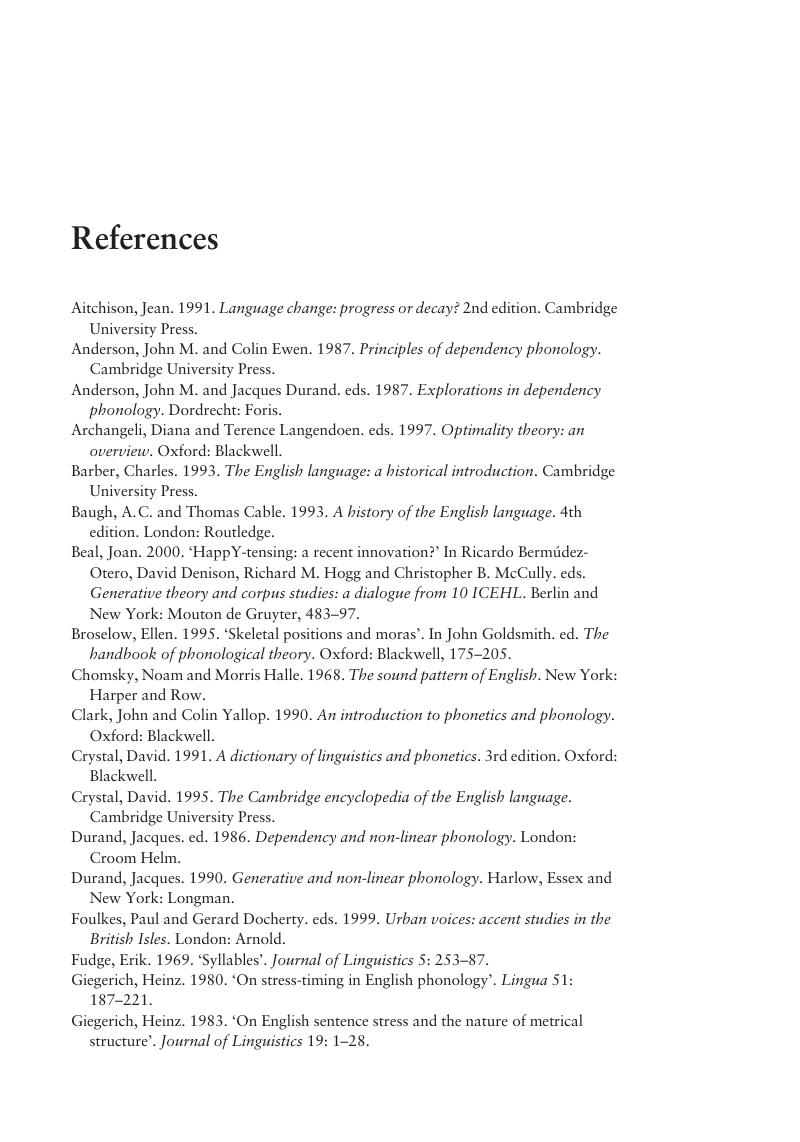Book contents
- Frontmatter
- Contents
- List of figures
- Acknowledgements
- A note on using this book
- 1 Introduction
- 2 Consonants (1): contrastiveness
- 3 Consonants (2): classification
- 4 Consonants (3): distribution
- 5 Syllables (1): introduction
- 6 Syllables (2): constituents
- 7 Syllables (3): structure
- 8 Vowels (1): short vowels
- 9 Vowels (2): long vowels and diphthongs
- 10 Vowels (3): variation
- 11 Problems, theories and representations
- Appendix: the IPA chart
- Glossary
- References
- Index of topics
- References
References
Published online by Cambridge University Press: 05 June 2012
- Frontmatter
- Contents
- List of figures
- Acknowledgements
- A note on using this book
- 1 Introduction
- 2 Consonants (1): contrastiveness
- 3 Consonants (2): classification
- 4 Consonants (3): distribution
- 5 Syllables (1): introduction
- 6 Syllables (2): constituents
- 7 Syllables (3): structure
- 8 Vowels (1): short vowels
- 9 Vowels (2): long vowels and diphthongs
- 10 Vowels (3): variation
- 11 Problems, theories and representations
- Appendix: the IPA chart
- Glossary
- References
- Index of topics
- References
Summary

- Type
- Chapter
- Information
- The Sound Structure of EnglishAn Introduction, pp. 227 - 229Publisher: Cambridge University PressPrint publication year: 2009



